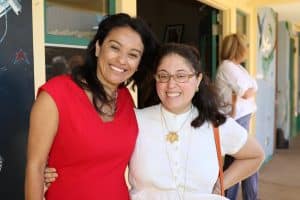MAY 23, 2018 | LEER EN ESPAÑOL
We asked three representatives of youth development organizations what they thought were the biggest issues for youth in Santa Barbara County, and how we could do better in addressing these issues. All three pointed out that most issues facing youth transcend geography, although the high cost of living in Santa Barbara County exacerbates the challenges facing low-income families.

According to its website, “In order to inspire girls and young women to be strong, smart and bold, Girls Inc. of Carpinteria seeks to empower girls and women to achieve personal, social, economic and political success. We strive to inspire critical thinking and progressive action in their lives. All programming is specifically designed to support this mission, to intentionally change girls’ lives and their world. In addition, our organization actively advocates for the elimination of gender barriers that limit girls’ options and involves them as agents of community change.”
Executive Director Victoria Juarez raised three issues impacting youth development services in Santa Barbara County, noting that more and more families are working multiple jobs that, because of housing issues, often require long commutes, leaving little time for nurturing their kids during after-school hours. These kids also need more academic support, as only 1/3 of kids from low-income families read at grade level (however, she points out with pride that 2/3 of Girls Inc. kids read at grade level). Finally, kids need opportunities to develop healthy relationships with adults outside the family as well.
Juarez thinks we do better by keeping our eye on the ball: “We need to remind children that we value them. Let every child – and teenager – know that whatever is going on in their lives, someone is going to be there for them.”

Juarez points out that many youth development organizations pursue the same goals: 1) Support the school district, 2) Help close achievement gaps, and 3) Provide safe spaces for kids to learn, explore, and grow. This is certainly true of the others we spoke to.
Launched 12 years ago, Santa Barbara School of Squash is a year-round sports and education program serving committed Santa Barbara youth (5th-12th grade) who qualify for the National School Lunch Program. SBSOS pillars include squash, academic tutoring, community service, enrichment opportunities, and mentoring.
According to Executive Director Robert Graham, “People think it’s a sports program, but it’s really an academic program first, a mentoring program second, and a sports program third. Our simple goal is to help these students graduate from high school. Students work on the sport, do homework with tutors, and make connections through mentors.”
Graham added to Juarez’s list of issues, noting that he sees very poor diet and nutrition, compounded by lack of activity and exercise, degrading students’ academic and athletic performance. Graham also cited a sense of entitlement, lack of social skills (manners and etiquette required for working with others), and an addiction to cell phones as issues hampering the growth and success of our local youngsters.
Graham believes we can do better by seeking a lasting difference rather than just throwing money at short-term solutions, and warned that many in the county may not be aware of the challenges: “Santa Barbara does a really good job of hiding its problems.”

Youth Interactive provides programs focused on technology, entrepreneurship, and the arts, empowering children and teens to become self sufficient through the development of creative skills.
Executive Director Nathalie Gensac offered that kids need more agency and ownership in their education: “We need to ask for their voice, give more responsibility, and make them part of the process of their own education. We need to listen to them and move with them.” She also sees a need to improve equity in access to opportunities in education and entrepreneurship.
But she was adamant about what she considers the biggest issue: “Quite frankly, the too-low minimum wage requires families to work three jobs, and that trickles down into less care for the next generation. That’s really the issue – people cannot earn enough for a proper family life.” Gensac feels we can do better by asking more questions and giving students more ownership of their education.
Speaking of “asking more questions,” philanthropist Eli Broad relentlessly asks one question of everyone he works with: “Is that the best you can do?” Here at the Santa Barbara Foundation, we ask the question of ourselves: “How can we do better?” Thankfully, many of the philanthropists and nonprofits with whom we work are also using this question as a means to continuous improvement, and coming up with innovative answers for the good of our communities.